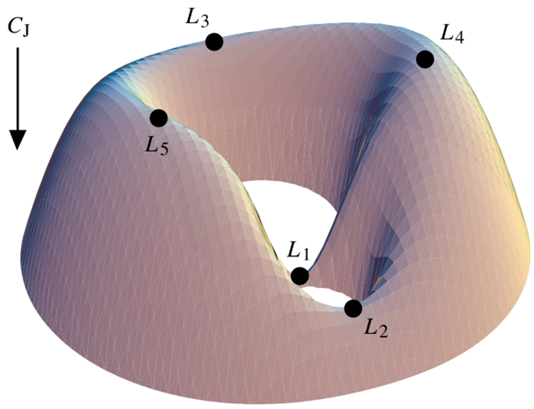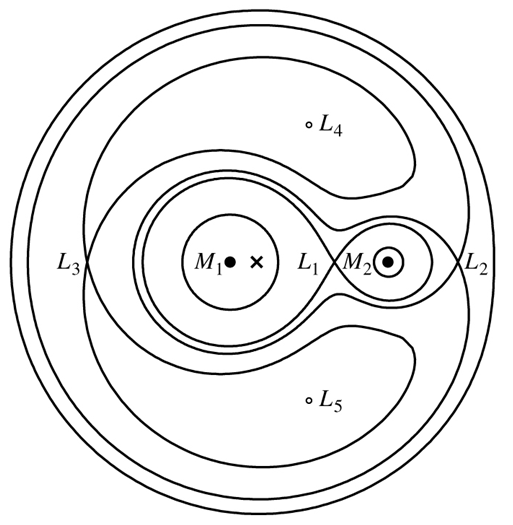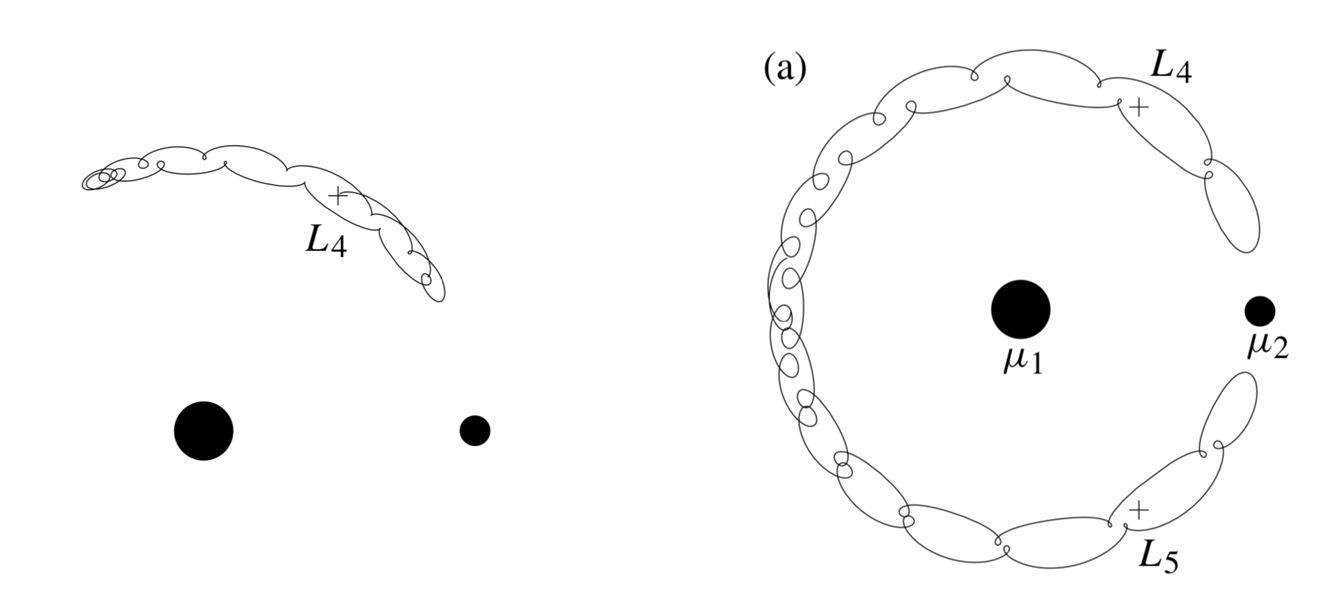PX282 - I6a - three body problem I
- considering the motion of three bodies
- generally, there is no analytical solution, and it is chaotic

image: Wolfram Alpha
- there are exceptions, such as the restricted three body problem, where the mass of third object is negligible

image: Murray & McDermott, Solar System Dynamics (1999)

image: Carroll & Ostile, An Introduction to Modern Astrophysics (2007)
- stable orbits in roche potential at lagrangian points where the gravitational potential is locally flat (in rotating frame)
- eg:
and in earth-sun system is often used for space telescopes

image: Murray & McDermott, Solar System Dynamics (1999)
-
tadpole and horseshoe orbits vibrate around the
and points -
eg: trojan asteroids in jupiter-sun system
-
approximate sphere of influence around the second body where orbits can be stable, called the hill sphere*
-
moons must be well within the hill sphere
-
considering a test particle at
point, so the distance between and the particle is the radius of the hill sphere, , and the distance between and is
- using kepler's third law, with
- since
, using binomial expansion: